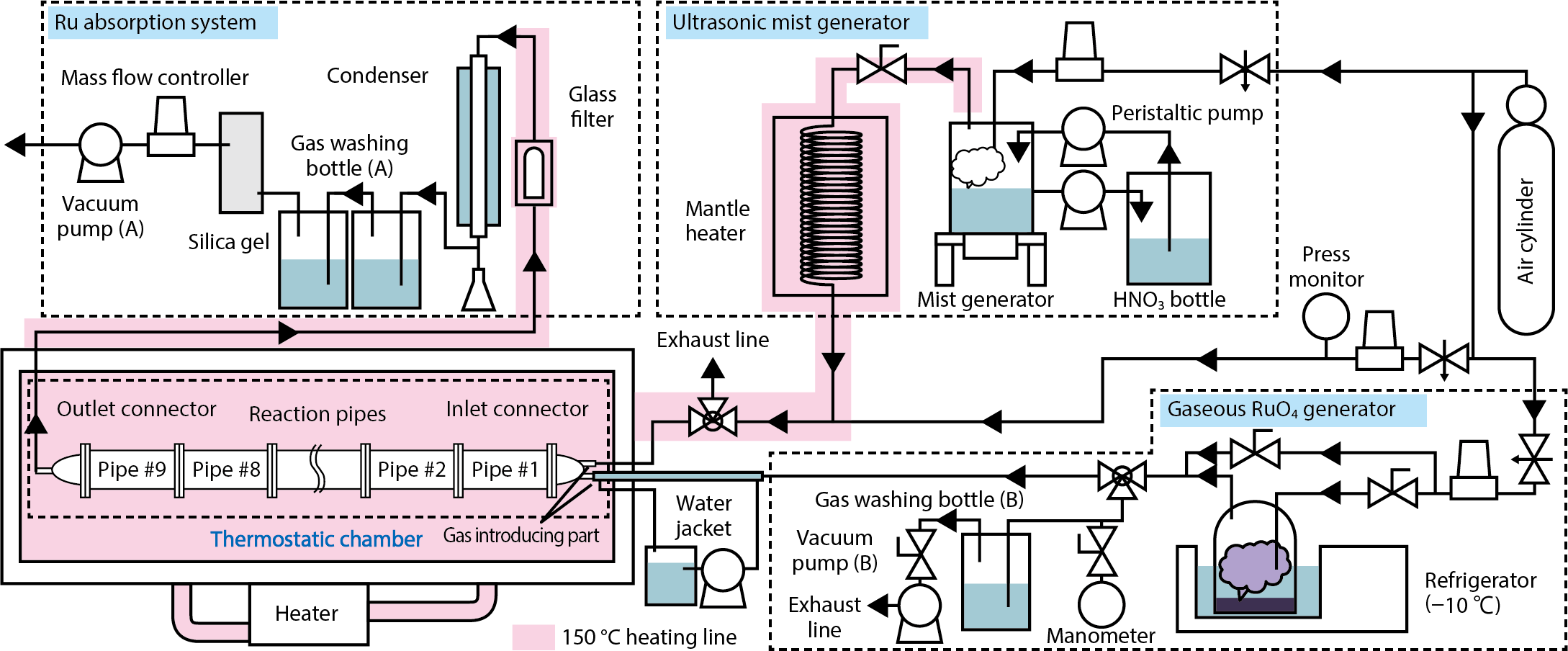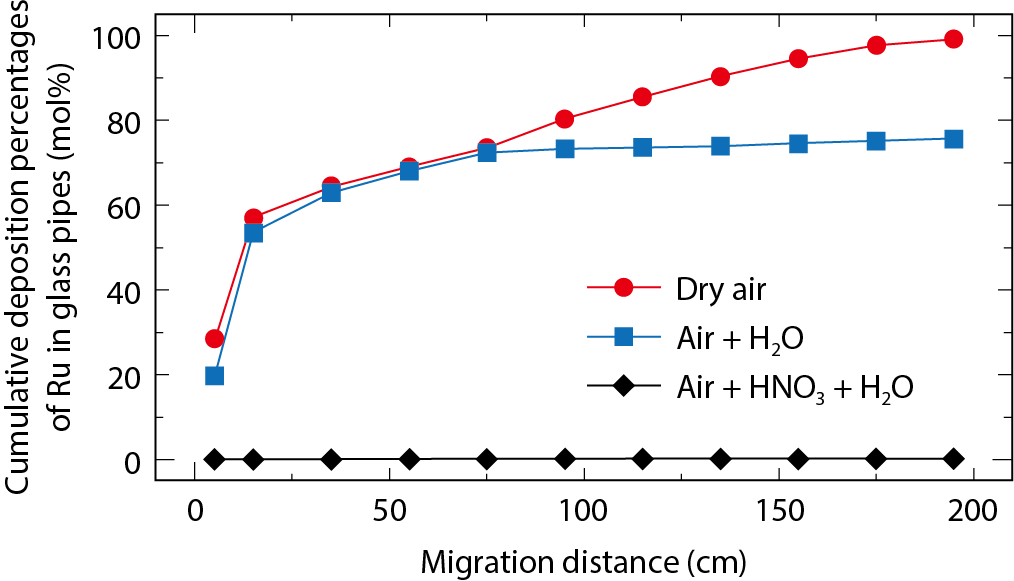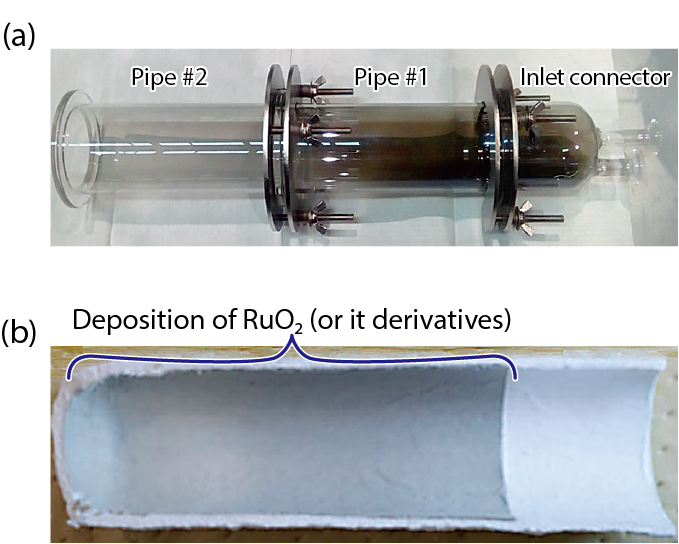
Fig.2-13 Schematic of experimental apparatus

Fig.2-14 Comparison of cumulatively collected Ru under each atmospheric condition

Fig.2-15 Photograph of deposited Ru on glass pipes and filter
To verify the safety of reprocessing plants (RP), it is important to evaluate severe accidents, which have a low frequency and large impact.
The high-level liquid waste (HLLW) in RPs is constantly cooled artificially because it is heated by the decay heat of the fission products. A shutdown of the cooling system from any cause may lead to the release of radioactive substances together with nitric acid and water vapor due to evaporation and the dryness of the HLLW. This accident, called a “boiling and drying accident” (BDA), is defined as one of the severe accident types in Japan’s nuclear safety standard for RPs.
Information on the behavior of radioactive substances in such an accident is essential to establish the management measures for a BDA. Ruthenium (Ru) is an important element from the viewpoint of public exposure assessment. It has higher radiotoxicity and a larger release fraction than other elements because it forms gaseous species such as ruthenium tetroxide (RuO4).
We prepared an apparatus that partially simulated the volatilization and migration of the Ru in a BDA, and we conducted experiments to evaluate the interactions between gaseous Ru and coexisting gasses (Fig.2-13). Gaseous RuO4 was supplied into glass pipes that simulated the migration pathway, and the migration behavior was evaluated from the deposition distribution of Ru in the apparatus. Experiments with dry air and water vapor were conducted as control experiments. Then, an experiment with HNO3 + water vapor was conducted to simulate the atmospheric conditions of a BDA.
Fig.2-14 shows the cumulative deposition percentages of Ru in the glass pipes. Fig.2-15 shows photographs of the Ru deposition on the glass pipes for the dry air condition and in the glass filter after the experiment for the water vapor condition. Almost all of the supplied gaseous Ru was decomposed and deposited in the glass pipes in the dry air atmospheric condition. In the experiment for the water vapor condition, most of the Ru was deposited. However, approximately 30 % of the supplied Ru was trapped in the glass filter. This result indicates that Ru aerosols were formed in the glass pipes. On the other hand, no deposition of Ru was observed for the HNO3 + water vapor atmospheric condition. This result meant that HNO3 vapor would have the effect of stabilizing gaseous Ru.
These results could to contribute to the improvement of accident management measures and safety assessment of a BDA.